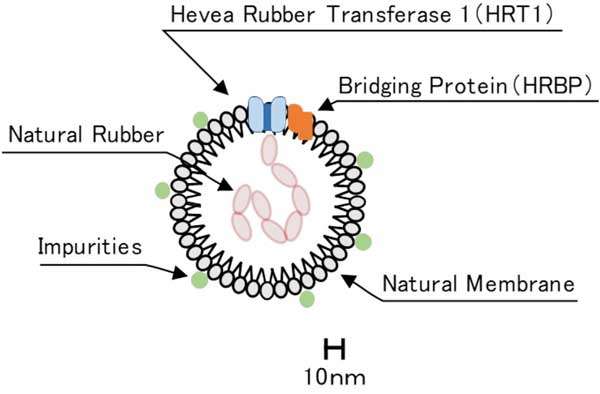Sumitomo Rubber Industries says that through ongoing joint research with Professor Yuzuru Tozawa of Saitama University, Associate Professor Seiji Takahashi of Tohoku University and Associate Professor Satoshi Yamashita of Kanazawa University, it has invented a new technique for evaluating enzymes using artificial membranes (nanodiscs) in order to shed further light on the mechanisms behind the biosynthesis of natural rubber (NR).
While previous evaluation techniques used natural membranes, this new technique uses artificial membranes, thereby eliminating environmental impurities to allow for higher precision evaluations. Using this groundbreaking technique to discover new significant constituents of NR will surely lead to the improvement of rubber yields and many other advancements, potentially even opening the door to laboratory biosynthesis of NR, it adds.
Sumitomo Rubber says, “We have long known that three specific proteins play an important role in natural rubber biosynthesis (i.e. the synthesis of long polyisoprene chains) in Pará rubber trees: “Hevea Rubber Transferase 1 (HRT1),” “HRT1-REF Bridging Protein (HRBP) and “Rubber Elongation Factor (REF).” However, it was not clear under what conditions HRT1 (an enzyme believed to bind multiple molecules together) fulfilled its particular function. In the past, HRT1 has been observed synthesising isoprene chains when placed on natural membranes, such as those formed by rubber particles or yeast, etc. However, the use of natural membranes presented an issue in that impurities in the membranes will inevitably contaminate the test environment, making it impossible to identify the other constituents necessary for isoprene chain synthesis.
Thus, the Japanese firm developed a new enzyme evaluation technique that uses artificial membranes (nanodiscs) that contain no natural materials.
Thanks to this breakthrough, it has now discovered that HRT1 synthesises isoprene chains when both HRT1 and HRBP are present on one of these artificial membranes. This was the first time that HRT1 has been observed performing this function on an artificial membrane, it adds.

